Double-walled corrugated pipe: scope and technical
Construction of residential buildings, industrial and public buildings, hospitals, kindergartens and public buildings (cinemas, gyms, shops, bars, restaurants) is not complete without installing underground and surface communications, which require a flexible double-wall corrugated HDPE / LDPE pipe.
Such protection is used for electrical cables and wires, lines of radio and communication (telephone, Internet), and it can be covered with earth, concreted or mounted on the surface of walls and ceilings - they are often called cable channel. Below we will tell you about the pipe itself and its installation methods, as well as see the video demonstration in this article.
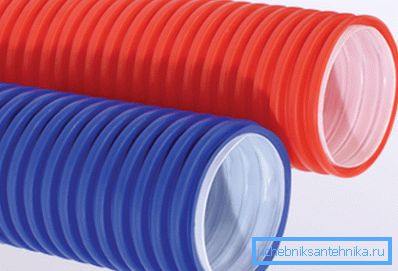
HDPE / LDPE
Explanation. The abbreviation PND stands for low-pressure polyethylene, and high-pressure polyethylene - respectively LDPE. There is also PE medium pressure with the abbreviation PSD.
PE as material
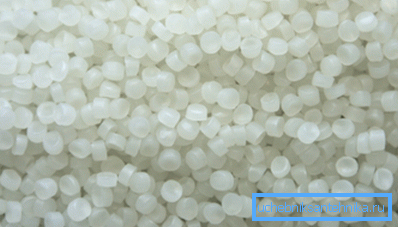
- Polyethylene (PE) or a thermoplastic polymer of ethylene, is an organic compound that comes in the form of granules from 2 mm to 5 mm in size for processing, and it can be called the most common type of plastic in the world. PE has excellent waterproofing and dielectric properties, frost-resistant, resistant to shock, softens at a temperature of 80? up to 120? C. It is often confused with cellophane, but the latter is a plant material.
- PE is a combustible material, but it does not react to alkaline compounds of any concentration and solutions of basic, acidic and neutral salts, organic and inorganic acids.. These indicators, along with water resistance, make the cable channel, which is the HDP / LDPE double-wall pipe, almost indispensable when installing electrification, radio and communications communications.
Differences between HDPE and LDPE
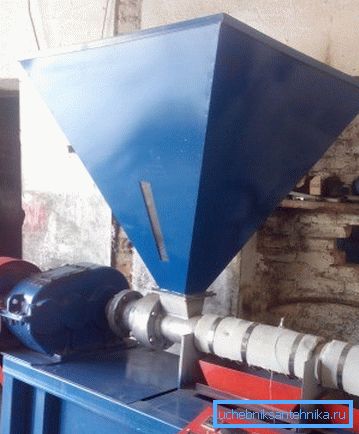
Low-pressure polyethylene (HDPE) or high-density PE (PVP) is formed at a temperature of 120 C-150 C, with a pressure below 0.1-2 MPa with Ziegler-Natta catalysts. Polymerization in this case is carried out in suspension by the ion-coordination mechanism, where the output is a product with a molecular weight of 80000-300000 (weight-average) and a degree of crystallization of 75-85%.
Medium pressure polyethylene (PSD) or high density PE (PVP) is formed at a temperature of 100-120 C, with a pressure below 3.0-4.0 MPa with Ziegler-Natta catalysts. Produced drops out of solution, like flakes, where the output is a product with a molecular weight of 300,000-400,000 and a degree of crystallization of 80-90%.
High-pressure polyethylene (LDPE) or high-density PE (PVP) is formed at a temperature of 200-260 C, with a pressure below 150-300 MPa, where organic peroxide or oxygen acts as an initiator. The process takes place in a tubular or autoclave reactor, where the reaction is carried out by a radical mechanism. The output is a product with a molecular weight of 80000-300000 and the degree of crystallization of 50-60%.
Note. It should be borne in mind that the definition of polyethylene as a material of high, medium or low pressure or high density can be called rhetorical. Often the material has the same molecular weight and density - basically everything depends on the structure and thickness of the finished product produced. So, LDPE pipes are usually thin and rough to the touch, and LDPE is smooth and viscous when stretched, and their price is, of course, higher.
Application

Low-pressure polyethylene pipes are used for pressure and non-pressure pipelines, for example, for installing sewage for industrial and civil construction, and (in some cases) for water supply. The exception here is, perhaps, the chemical industry, where high pressure PE is used for sewers.
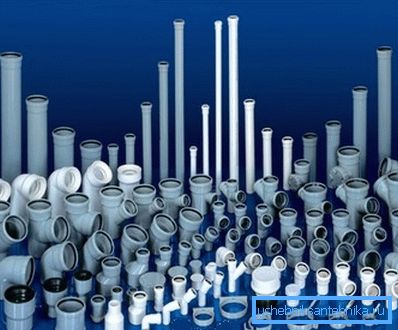
The installation of such pipelines can be done by welding the pipes, or by joining the socket, using a rubber sealer, and this second method is well known to most residents who have had to deal with home repairs or even make them with their own hands.
For domestic sewage, HDPE with a diameter of 50 mm and 100 mm is used, and in some cases 32 mm (for washing machines and dishwashers) and 150-200 mm (for tapping into the municipal sewage system).
For joining HDPE pipes, for decouples, turns, transitions to another plane, as well as for changing the diameter, fittings of different configurations are used, which are made from a homogeneous material with rubber seals.
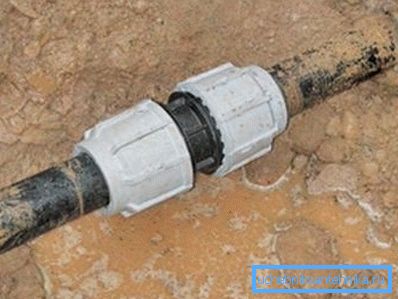
For water pipes with low pressure, where the supply is carried out by hydrophore or a submersible pump, use HDPE pipes with a diameter of 32 mm. For their joining are used rotary, straight and reducing fittings for compression connection.
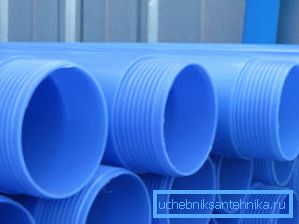
High pressure PE pipes are used for water mains, as casing for artesian and sand wells, as well as fixed elements for the formation of technological holes in monolithic concrete. The joining of such pipes is performed using compression fittings - this is the simplest method that does not require special tools.
It can also be butt welding, where the ends of the joined fragments are heated. The third method involves the use of electrofusion couplings made of polyethylene, inside which is located electrospiral.
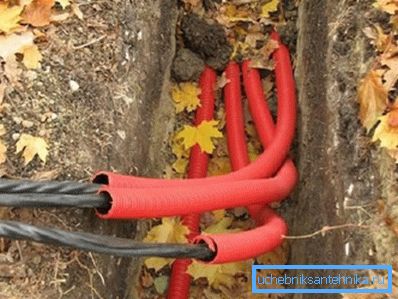
For installation of unarmored cables in trenches, as well as for wiring in the room, a double-walled PND / LDPE pipe is used, where the upper, corrugated layer consists of low-pressure PE, and the inner, smooth layer is high-pressure PE.
Conclusion
Pipes PND and PVD today are the most common in the arrangement of communications for public, residential and industrial buildings. For the installation of each modification has its own instructions given by the manufacturer.